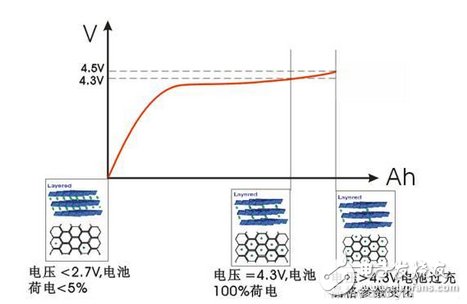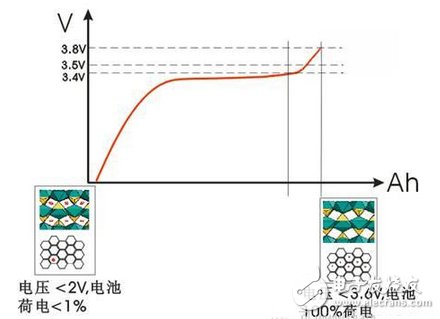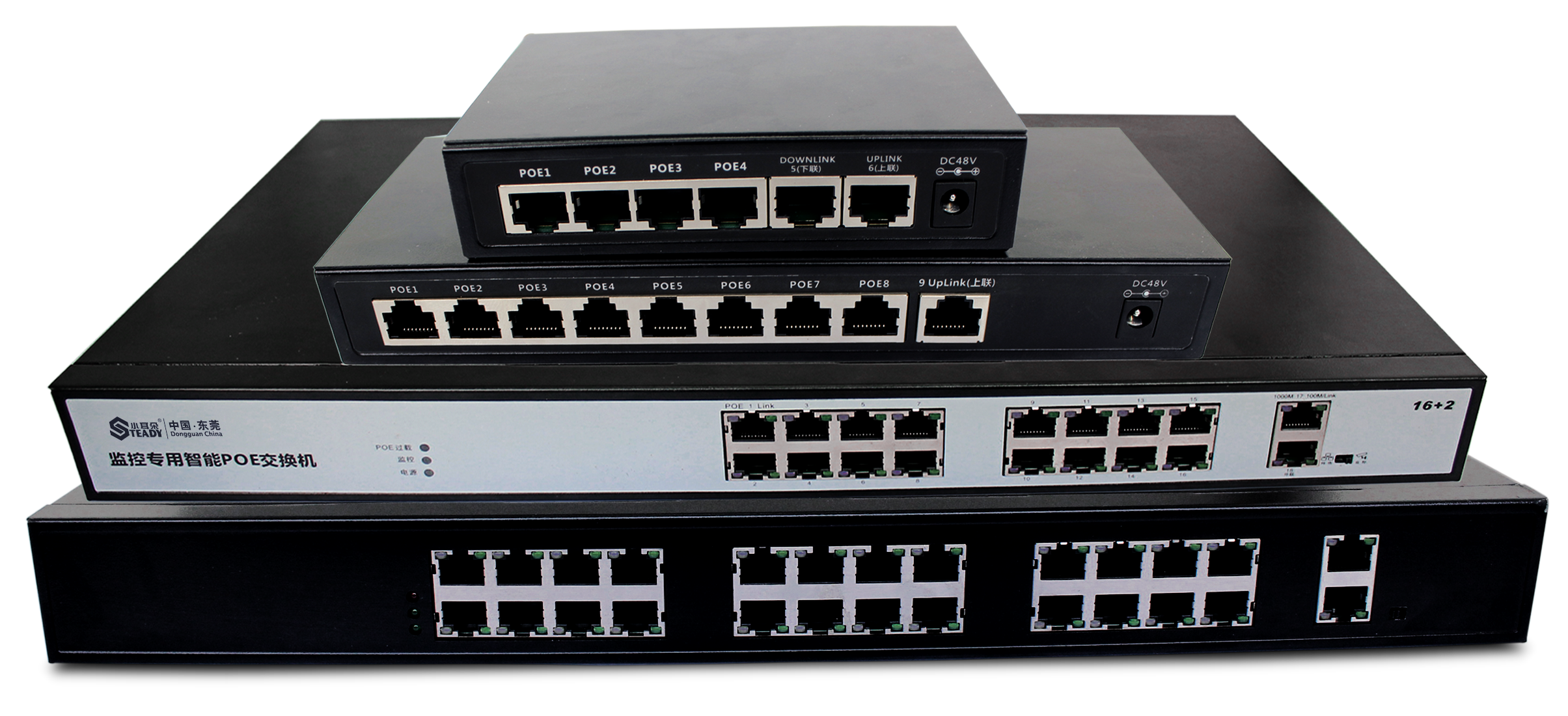Ordinary series charging
At present, lithium-ion battery packs are generally charged in series, mainly because the series charging method is simple in structure, low in cost, and easy to implement. However, due to the difference in capacity, internal resistance, attenuation characteristics, self-discharge, etc. between the single-cell lithium-ion batteries, when the lithium-ion battery pack is charged in series, the single-cell lithium-ion battery with the smallest capacity in the battery pack will The first battery is fully charged, and at this time, the other batteries are not fully charged. If the series charging is continued, the fully charged single-cell lithium-ion battery may be overcharged.
Lithium-ion battery overcharge can seriously damage the performance of the battery, and may even cause personal injury caused by the explosion. Therefore, in order to prevent over-charging of the single-cell lithium-ion battery, the lithium-ion battery pack is generally equipped with a battery Management System (Battery Management System). , referred to as BMS), protects each single-cell lithium-ion battery by battery management system. When charging in series, if the voltage of a single lithium-ion battery reaches the overcharge protection voltage, the battery management system will cut off the entire series charging circuit and stop charging to prevent the single battery from being overcharged, which will cause other Lithium-ion batteries cannot be fully charged.
After years of development, lithium iron phosphate power battery has basically met the requirements of electric vehicles, especially pure electric cars, because of its high safety and good cycle performance. condition. However, the performance of lithium iron phosphate batteries is different from other lithium ion batteries, especially the voltage characteristics are different from those of lithium manganate batteries and lithium cobalt oxide batteries. The following is a comparison of the charging curves of lithium iron phosphate and lithium manganese oxide batteries with lithium ion deintercalation:

Fig.1 Corresponding relationship between lithium ion deintercalation and charging curve of lithium manganate battery

Fig. 2 Corresponding relationship between lithium ion deintercalation and charging curve of lithium iron phosphate battery
It is not difficult to see from the curve above that when the lithium iron phosphate battery is fully charged, the lithium ion is almost completely decoupled from the positive electrode to the negative electrode, and the voltage at the battery terminal rises rapidly, and the charging curve is upturned, which causes the battery to be very It is easy to reach the overcharge protection voltage. Therefore, the phenomenon that some of the batteries in the lithium iron phosphate battery pack are not fully charged is more obvious than the lithium manganate battery pack.
In addition, although some battery management systems have equalization functions, due to cost, heat dissipation, reliability and other aspects, the equalization current of the battery management system is generally much smaller than the current of series charging, so the equalization effect is not obvious, and it will appear. Some single cells are not fully charged, which is more obvious for lithium-ion battery packs that require high current charging, such as lithium-ion battery packs for electric vehicles.
For example, 100 lithium-ion batteries each having a discharge capacity of 100 Ah are connected in series to form a battery pack, but if 99 of the single-cell lithium-ion batteries are charged at 80 Ah in the group before, and another single-cell lithium-ion battery is charged at 100 Ah, When the battery pack is charged in series, the single-cell lithium-ion battery with a charge of 100 Ah will be fully charged to achieve the overcharge protection voltage. In order to prevent the single lithium-ion battery from being overcharged, the battery management system will The entire series charging circuit is cut off, which makes the other 99 batteries unable to fully charge, so that the entire battery pack discharge capacity is only 80Ah.
Generally, when the battery manufacturer tests the capacity at the factory, the single battery is firstly charged with constant current and then charged at a constant voltage, and then discharged by a constant current to measure the discharge capacity. The general discharge capacity is approximately equal to the constant current charging capacity plus the constant voltage charging capacity. However, in the series charging process of the actual battery pack, there is generally no constant voltage charging process for the single battery, so the constant voltage charging capacity will be absent, and the battery pack capacity will be smaller than the single battery capacity. The smaller the general charging current, the smaller the ratio of the constant voltage charging capacity, and the smaller the loss capacity of the battery pack. Therefore, the battery management system and the charger are coordinated to cooperate with the series charging mode.
Ethernet power supply system is referred to as POE power supply, which consists of Ethernet power supply equipment and Ethernet power equipment. It can transmit data and provide DC power supply to client equipment only through one Ethernet cable, without the need for additional wiring.Gigabit POE Switches are divided into managed and non-managed POE switches ,non-standard POE switches which do not meet the IEEE802.3af/at. and also it has indoor series and outdoor series with 10/100/1000M input and output port.
Features:
1. Can recognize the impedance of the signal. When an input voltage is applied to the device, it must be roughly identified within the defined voltage range. When an ethernet power device pleads for power supply, it first sends out the voltage signal of 2.5V~10V to Ethernet. After detecting the voltage signal, the power facility puts a 23750 ohmic resistor on the power supply circuit, and the current changes with the input voltage. By detecting the current, it is confirmed that there is an effective Ethernet power supply at the Ethernet cable terminal. If the arranged resistance value is in the area of 26250 / 45000 ohms, it is considered that the ethernet equipment is effective but does not need to supply power. Resistive values of other sizes mean that the detected ethernet equipment is useful.
2. Type. Electricity is equipped with a type of gap, each type corresponding to not a certain current. Analogy, the "0" class of electricity is equipped with a current of 0.5 Ma 4 Ma. When an effective signal is detected by a power supply, it is classified. The specific method is to lift the voltage to 15.5V or 20.5V on the Internet link, so that the Ethernet power equipment loses a static current, and then completes the classification of the power facilities according to the current scale.
3. Open coherent connection. There are two kinds of switches connected to Ethernet power supply (Poe power supply), one is bipolar crystal switch, which has high utility and low capital, and the other is MOSFET switch, which has extremely high power performance and can be close to 100th.
Application:
Suitable for different Ethernet devices such as: IP phone, network security camera, PDA, mobile phone charger, card reader, etc.
Product images:

POE Switches
Unmanaged POE Switch,POE Switches,Smart POE Switch,Network Switch POE
Guangdong Steady Technology Co.LTD , https://www.steadysmps.com